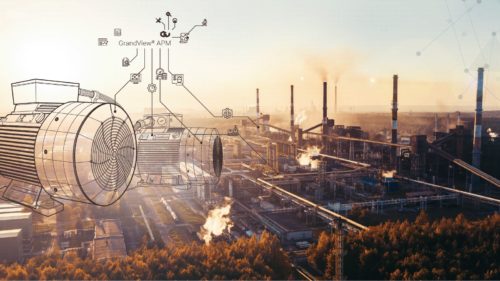How AI can help food manufacturers improve maintenance
A more practical approach is needed for the every-day decisions that keep operations running effectively and artificial intelligence can help food manufacturers improve overall maintenance.
Industry 4.0 – in conjunction with digitalization – is starting to transform the way we all work, collaborate, create products, and go-to-market. Data is now the driving force behind success, helping to track everything from the identification of plant assets and associated maintenance requirements to traceability and customer buying trends. But, as more and more organizations roll out their own digital initiatives, there are some common stumbling points.
In the same way food and drink has a shelf life, data must be consumed quickly to be relevant and useful. However, food and beverage manufacturers often struggle to process and apply data insights with appropriate urgency. Multiple factors get in the way, with data overload often being the most debilitating issue.
Data volume is a key Industrial Internet of Things (IIoT) challenge. It is easy to become bogged down in the never-ceasing flow of data points. Organizations are often ill-equipped to aggregate, prioritize, and draw conclusions from the data. Storage of huge volumes of data can also be a challenge, forcing companies to turn to cloud computing with elastic flexibility. Problems often occur due to a lack of experience. For example, AI-driven analytics that can forecast likely outcomes and prescribe responses are technologies available typically require IT professionals with data science skills. Companies have often been forced to turn to third-parties which can become costly.
In turn, this makes it challenging to scale true Industry 4.0 initiatives as AI-powered analytics can take years to build and deploy. While massive projects offer promising opportunities, they tend to require advanced data science principles and specialized skills, including report-writing expertise. A more practical approach is needed for the every-day decisions that keep operations running effectively.
A better approach
A new breed of AI tools puts powerful predictive analytics in the hands of front-line users, helping them address day-to-day needs with greater insight. It is no longer necessary to turn to code-writing developers to create use-case-specific applications. With functionality assured through solid back-end code and application programming interfaces (APIs), users can delve into the data they care about with a variety of automated analytic tools.
AI can be used for more than automating some simple processes. Its true potential comes from applying machine leaning and predictive analytics to a variety of practical and personalized use cases – whether it is a farm that wants to project optimal field yield or a brewery that needs to estimate the amount of barley and hops to procure each month. AI has the potential to offer advice, discover performance patterns, analyze multiple influencing factors, and draw complex conclusions about a specific question — including questions that require a window into the future.
The maximum potential is reached when AI can emulate and enhance human performance, offering advice that is reliable and intelligent. This predictive insight helps organizations anticipate, understand and prepare for future trends and outcomes. This is especially important in the food sector, as manufacturers race to develop new products based on changing customer preferences. As buying habits change companies can turn to AI-driven analytics to monitor costs, optimize margins, and refine supply chain decisions.
For line-of-business managers and plant operational teams to make good use of AI, the technology has to have been an intuitive interface automating decisions about what algorithms to apply and how to incorporate relevant contextual information, like weather variables, crew shifts or time of day. The system should automate the machine-learning process, continually refining the 20 or 30 different factors that might go into the algorithm.
Behind the curtain, an AI solution can autonomously analyze data, generating reports that that the business user will be able to apply in daily tasks. The data patterns can be used to spot issues, opportunities or unknowns that simply would never be visible through traditional spreadsheets and reports.
而不是被大众哒ta, forward-thinking food manufacturers need to invest in tools to help them turn numbers into insights. New AI-driven analytics allow users to consume the data and formulate meaningful, practical applications. This helps business users at all levels of an organization to gain the benefits of data science—without requiring customer report-writing or help of code-writing IT experts. Democratizing data analysis empowers individuals. It leads to a well-thought-out AI strategy that can accelerate the flow of information across the enterprise. To succeed in the modern world, food manufacturers need smart tools to help them make fact-based decisions and unleash the true potential of Industry 4.0.
This article originally appeared onControl Engineering Europe’swebsite.
Original content can be found atPlant Engineering.
Do you have experience and expertise with the topics mentioned in this content? You should consider contributing to our CFE Media editorial team and getting the recognition you and your company deserve. Clickhereto start this process.






